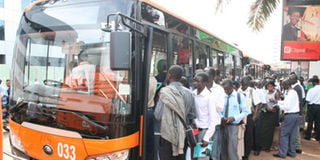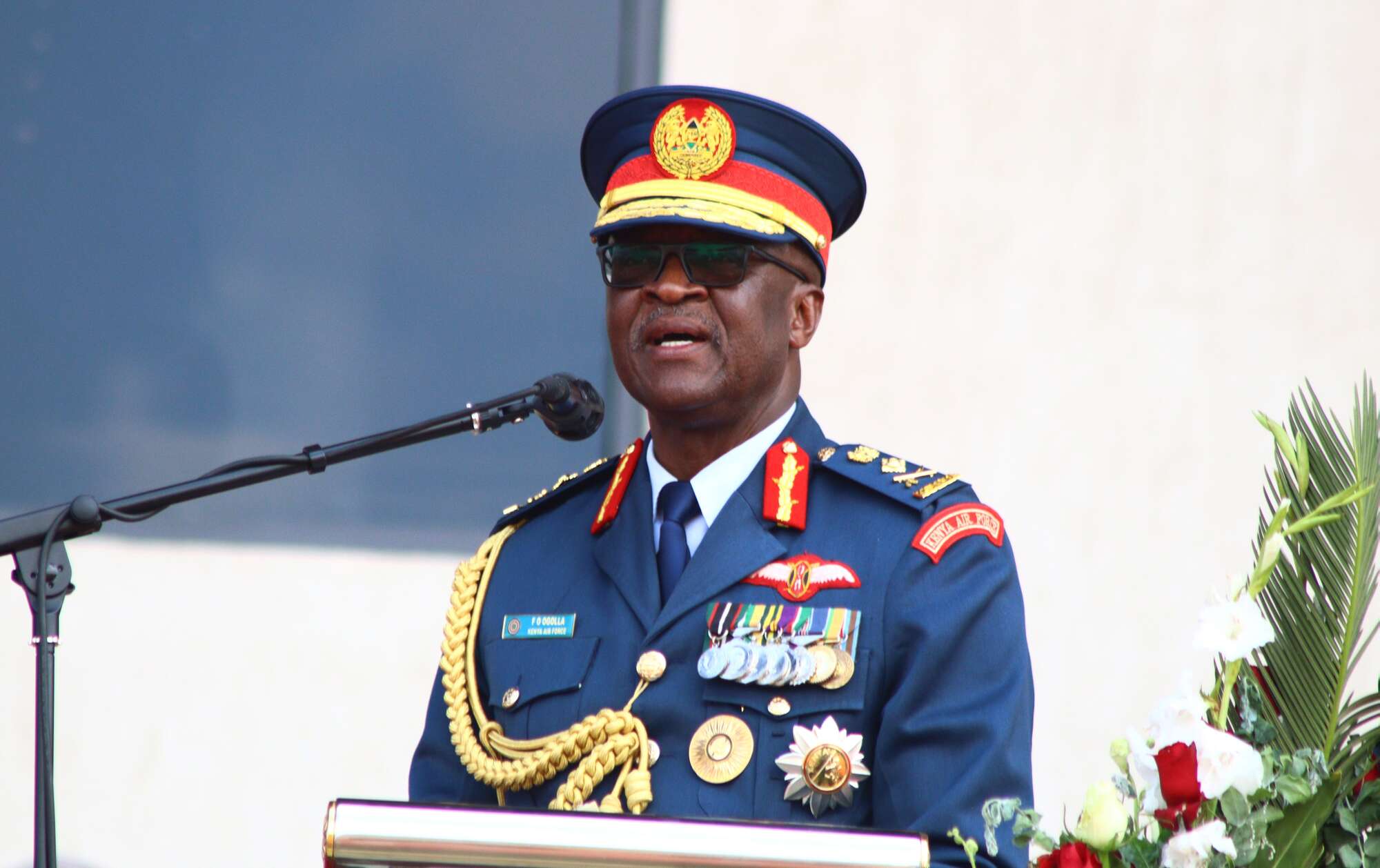Was Pioneer bus case study for Kampala city transport?

Trendsetter. Passengers board a Pioneer bus on Kampala road in April. FILE PHOTO
What you need to know:
- According to Mr Gordon Abesiga, the Pioneer Easy buses general manager, when they started operations in 2012 they were supposed to import 500 buses, but only 100 came to test the market.
- Currently, besides transporting passengers daily, Pioneer buses are contracted by companies to transport staff along routes they ply.
Kampala. How much time, money and fuel do Kampala residents lose due to congestion caused by traffic jams during the peak hours in the city and must every one drive to work?
These and more, would be the questions if this was an academic assignment.
However, with the traffic congestion which has worsened, these questions are relevant and demand for answers from both Kampala Capital City Authority (KCCA), and the city residents.
In 2012 following a taxi drivers’ strike which paralysed transport in the city, government and KCCA swiftly ushered in numberless Pioneer buses on Kampala streets guarded by police, as a stopgap measure to undermine the taxi drivers’ strike.
Indeed for a fare of Shs500 within the city centre and Shs1,000 for any distance outside the city, the Pioneer Easy buses received a warm reception which has stayed on until today because their fare is constant no matter the situation on the road unlike commuter taxis which charge erratically depending on the availability of customers.
Five years down the road, the company is regretting why it commenced operations prematurely without ensuring that government fulfilled its side of the bargain on the Shs40 billion investment.
According to Mr Gordon Abesiga, the Pioneer Easy buses general manager, when they started operations in 2012 they were supposed to import 500 buses, but only 100 came to test the market.
Their agreement with KCCA was that they would decongest the city, provide cheap, reliable and safe passenger transport which would eventually push taxis out of the city.
“When we came to the market, you remember that there was a taxi drivers’ strike and we were forced to bring the buses on the streets even without number plates. We were not yet ready. We were setting up our management structures and we were forced to enter the market prematurely,” Mr Abesiga said.
Government on the other hand, was supposed to demarcate special lanes for the buses to avoid getting stuck in traffic, it was also supposed to give a tax subsidy for the buses since they were imported outside the Comesa region.
However, shortly after entry into the market, their first disappointment was a Shs6 billion tax Uganda Revenue Authority (URA) slapped on Pioneer bus because of importing buses from China, which is outside the Comesa region.
Secondly, the special bus lanes they had been promised were not provided and while URA grounded their buses from February 2013 to May 2015 as they negotiated how to clear their tax obligation, some of their buses started depreciating, affecting 40 of them which have not gone back to the road.
Thirdly, as URA halted their operations on Kampala streets, the disbanded Uganda Taxi Operators and Drivers’ Association (UTODA), imported 100 Tata buses and a number of 30-seater omnibuses sparking off another row over transport routes around the Kampala Metropolitan area.
To compound the problem, Mr Abesiga says the failure by taxis to vacate the roads has presented the company with unfair competition because as a registered entity, they have to pay taxes such as Pay As You Earn, contributions to National Social Security Fund and income tax, which taxi operators do not pay since they are not a registered business.
According to Mr Abesiga, it is like competing with somebody with whom you import similar goods but is not paying import tax, which made them fail to break even.

Stranded. Pioneer buses at Mandela National Stadium, Namboole in Wakiso District. PHOTO BY STEPHEN OTAGE
“Our buses carry 60 passengers both sitting and standing, meaning one bus is equivalent to three taxis. If we bring all the 500 buses, we can remove the 6,000 (taxis) from Kampala, but we have been forced to operate like taxis, yet we pay taxes for the 400 employees we use,” he said.
He added that on any given day, they transport 25,000 passengers, meaning that those travellers combined save Shs25 million if you compare their fare to what taxis charge, noting that in modern cities, mass transport is provided by government but managed by the private sector.
Among the other challenges they have encountered is the indiscipline use of roads which has caused them accidents. He said that like it is in Nairobi, there is need to create a special lane for motorcycles and cyclists.
“We have many indiscipline drivers on our roads, most of our vehicles have been involved in accidents and yet we do not have their spares here, we have to import spares from China. This is a city bus which has unique features,” Mr Abesiga said.
He added: “If the public transport sector is organised, then we can set up a reliable and dependable mass transport system. Such a system would ensure that it is cheap, affordable and dependable.”
Some of the unique features, he says include facilities such as catering for people with disabilities; making it free for uniformed personnel like the Police, Military and Prisons, special seats for pregnant women and the elderly.
Efforts to get a comment about the future of mass transport in Kampala and what KCCA is doing to fulfil the promises that were made to Pinoneer Bus were futile by press time as the KCCA spokesman, Mr Peter Kauju, did not pick our repeated calls.
According to Simon D’ujanga, the Energy State minister, recently with the minister of Finance, they visited the Scania Truck manufacturing factory in Stockholm, Sweden where they were shown different types of city buses.
Mr D’ujanga said representatives of the company have started discussions with KCCA on how to introduce the buses to Kampala.
“Definitely, Kampala City needs a bus system which takes many people at a go, at low cost and helps people save at the same time. These people can make for you tailor-made buses to suit your conditions,” he said.
Asked how their system operates back home, Mr Per Lindgarde, the Swedish ambassador to Uganda said since the 1960s they have had buses as a public transport system, which has survived for decades. He does not know how many passengers they carry but he says it is a well-developed system.
“Majority of people use buses, local trains and it is something we need here in Kampala when you look at the traffic jam. It is the private sector running this business in the city,” he said, adding that they can make buses according to need specifications, for instance, they make a long bus which is like a train if the roads are narrow.
Currently, besides transporting passengers daily, Pioneer buses are contracted by companies to transport staff along routes they ply.
[email protected]




